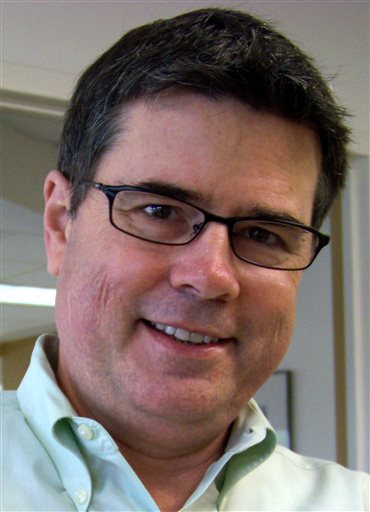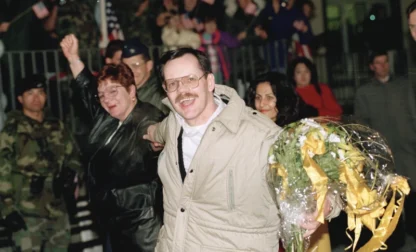MINNEAPOLIS (AP) -- David L. Pyle, a longtime bureau chief, news editor and reporter during his 33-year career with The Associated Press, has died. He was 61.

Pyle, who worked for the news cooperative in five states, most of it as bureau chief in Minnesota and Wisconsin, died at his home Monday in the St. Paul suburb of Apple Valley, according to his son, Christopher Pyle.
The Iowa native joined AP as a newsman in Omaha in 1979. He later worked in Dallas and Providence, Rhode Island, before moving in 1991 to Minneapolis, where he spent the last two decades of his career and oversaw major breaking news.
Such stories included the 2007 Minneapolis bridge collapse, in which 13 people were killed and 145 injured when the Interstate 35W bridge broke apart over the Mississippi River during evening rush hour, and U.S. Sen. Paul Wellstone’s death in a plane crash in 2002. He also oversaw the marathon recount of the state’s U.S. Senate race in 2008, and coverage of a teenage gunman’s 2005 shooting at a high school on the Red Lake reservation that killed 10 people.
Pyle, who suffered from diabetes and underwent a kidney transplant in 1999, showed “great courage” in coping with a disease, said Tena Haraldson, the AP’s former bureau chief in North Dakota and South Dakota.
“Dave often worked in pain and fatigue. He wore an insulin pump for many years, but that didn’t stop him from driving hundreds of miles and putting in long days, often in bad weather, to meet with members or cover news. He went through a kidney transplant that saved his life. But the anti-rejection drugs also left him susceptible to serious infections and illnesses,” Haraldson said.
“He didn’t talk about it because he didn’t want to be defined by his illness, and he never was. When he was ill his voice might have been weaker, but his jokes and observations remained as on-target and irreverent as always.”
Paul Stevens, in his role as AP’s Central Region vice president from 2003 to 2009, worked closely with Pyle.
“Dave was a newsman, first and foremost, and in the visits we made together to Minnesota and Wisconsin members, the respect he held from member editors and publishers was so very apparent — gratifying to witness but not surprising,” Stevens said.
“He never lost his sense of what made AP essential: Our news coverage. And he never lost sight of what made bureau chiefs unique: Their ability to listen, to consult, to problem solve, to be the face of the AP in newsrooms large and small.”
Two years after joining AP in Omaha, Pyle was promoted to news editor. He was named supervisory correspondent in Providence in 1983, and five years later moved to Dallas, where he was briefly news editor before being promoted to assistant chief of bureau.
Pyle was promoted in 1991 to bureau chief in Minneapolis, where he spent 21 years before stepping down in 2012. He led news and membership efforts in a territory that eventually grew to include Wisconsin.
John Bodette, executive editor of the St. Cloud Times and a former president of the state AP newspaper board, recalled Pyle’s efforts in establishing an AP award for new journalists and an annual jobs fair for AP members.
“That kind of extra effort and vision, that’s a legacy,” Bodette said. “I don’t want people to forget what he did.”
Along with his son, Pyle is survived by his wife, Maria; his daughter, Kate; and three grandchildren. Funeral arrangements were pending.




